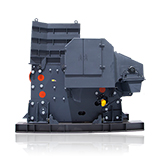What Is the Price of a 50-500 TPH Stone Crusher Plant?
When it comes to aggregate production, construction materials, and mining industries, stone crusher plants play a pivotal role in breaking down large rocks into smaller, usable sizes. Among the vast range of crushing plants, the 50-500 TPH (tons per hour) stone crusher plant is a popular choice for medium to large scale operations due to its efficiency and capacity.
If you are considering investing in a 50-500 TPH stone crushing plant, one of the primary questions likely on your mind is: “What is the price of a 50-500 TPH stone crusher plant?” This article will provide a comprehensive insight into the cost structure, components, and factors influencing the price of a 50-500 TPH stone crusher plant.

What is the 50-500 TPH Stone Crusher Plant Used For?
The capacity of a stone crusher plant is typically measured in tons per hour (TPH). A 50-500 TPH capacity means that the plant can process between 50 and 500 tons of raw material every hour. This range covers small, medium, and large stone crushing projects:
- 50-100 TPH plants are suitable for small-scale urban construction projects and road building.
- 100-300 TPH plants cater to medium-sized infrastructures such as highways and bridges.
- 300-500 TPH plants are often deployed for large-scale mining, quarrying, and infrastructural mega projects.

Factors Affecting the Price of a 50-500 TPH Stone Crusher Plant
- 1. Plant Configuration & Process Flow: A simple, single-stage crushing circuit for base material is far less expensive than a complex three-stage circuit producing multiple, precisely shaped aggregate products.
- 2. Equipment Quality and Brand: Tier-1 brands command a premium for their reliability, performance, and resale value, while lesser-known brands offer lower initial costs but potentially higher lifetime operating expenses.
- 3. Mobility: Is this a stationary plant fixed to a foundation, or a mobile/mobile-tracked plant? Mobile plants offer flexibility but come with a significantly higher price per ton of capacity due to the integrated chassis and engines.
- 4. Level of Automation: A basic, manually operated plant costs less than one with a fully automated PLC control system that optimizes production and protects the machinery, albeit at a higher upfront cost.
- 5. Site-Specific Requirements: Factors like local labor costs, shipping distances, import duties, and environmental mitigation systems (e.g., dust suppression) all add to the final price.

Breaking Down the Cost Structure: CAPEX Components
Here is a detailed breakdown of where your investment goes:
A. Crushing and Screening Equipment (40-60% of Total Cost): This is the core cost.
- Primary Crusher: Jaw crusher or gyratory crusher for large feed.
- Secondary Crusher: Cone crusher or impact crusher for further reduction.
- Tertiary Crusher: Cone crushers or Vertical Shaft Impactors (VSI) for shaping and producing fine aggregates.
- Screens: Vibrating screens to separate material by size.
B. Auxiliary Equipment (15-25% of Total Cost): Often overlooked but critical.
- Vibrating Grizzly Feeder: Regulates feed into the primary crusher.
- Conveyors: A network of belt conveyors to transport material between stages.
- Hoppers and Bins: For feed and product storage.
C. Electrical and Control Systems (10-15% of Total Cost):
- Motors and Starters: To power all the equipment.
- Control Panel and PLC: The brain of the plant, enabling monitoring and automation.
- Cabling and Power Distribution.
D. Structural and Civil Works (5-15% of Total Cost):
- Steel Support Structures: For stationary plants.
- Foundations: Requiring significant concrete and rebar.
E. Installation, Commissioning, and Logistics (10-20% of Total Cost):
- Shipping: Cost varies enormously by distance and equipment size.
- On-site Installation: Labor for assembly and erection.
- Commissioning: Ensuring the plant runs as designed.
Realistic Price Ranges for Different Scenarios
The following ranges are for stationary plants and include major equipment, steel structure, and electrical systems. They exclude civil works, installation, and shipping.
1. Low-End Configuration (50-100 TPH)
Description: A simple 2-stage plant (Jaw Crusher + Cone/Impact Crusher) with basic screens and minimal automation. Ideal for producing base course and aggregate from low-abrasion rock like limestone.
Realistic Price Range: USD 80,000 to 200,000
2. Mid-Range Configuration (150-250 TPH)
Description: A robust 2-stage or basic 3-stage plant. Higher capacity jaw and cone crushers, multiple screens for better product classification, and a semi-automated control system. Suitable for granite or basalt.
Realistic Price Range: USD 200,000 to 600,000
3. High-End Configuration (300-500 TPH)
Description: A full 3-stage crushing and screening plant designed for high-volume production of multiple, high-spec products. Includes large crushers (possibly a primary gyratory), multiple screens, extensive conveyor systems, advanced dust suppression, and a fully automated control room.
Realistic Price Range: USD 600,000 to over 1 million
4. The Mobile Plant Premium:
For a mobile jaw and cone crusher combination in the 200-300 TPH range, expect prices to start at $750,000 - $1,500,000 USD or more, as you are essentially paying for two self-powered, highly engineered machines.
Beyond CAPEX: The Crucial Role of Operating Costs (OPEX)
A smart buyer evaluates the Total Cost of Ownership (TCO), not just the purchase price. Key OPEX factors include:
- Wear Parts: The cost and lifespan of jaw plates, mantles, concaves, and blow bars. A cheaper crusher may have exorbitant wear part costs.
- Energy Consumption: More efficient crushers (like cone crushers) can save thousands of dollars annually in electricity.
- Labor: Automated plants require fewer operators.
- Downtime: Reliable equipment from reputable brands minimizes costly production stops.
How to Approach Your Purchase?
Instead of asking "What is the price?", a more productive question is: "What is the return on investment for a plant that meets my specific needs?"
- 1. Define Your Requirements: Be clear on your feed material (hardness, abrasiveness, size), required final products, and desired annual production.
- 2. Get Detailed Quotes: Request itemized quotations from reputable suppliers that break down equipment, engineering, and proposed spare parts.
- 3. Evaluate TCO: Compare not only the initial price but also projected wear part costs, energy efficiency, and service support.
- 4. Plan for the Hidden Costs: Always budget 15-25% on top of the equipment price for shipping, installation, and commissioning.
The price of a 50-500 TPH stone crusher plant varies widely depending on capacity, configuration, automation, and supplier. A smaller 50 TPH plant may cost as low as USD 80,000, while a large 500 TPH plant can exceed USD 1,000,000. Understanding your project requirements, equipment types, quality standards, and after-sales services is vital in making informed purchasing decisions.







